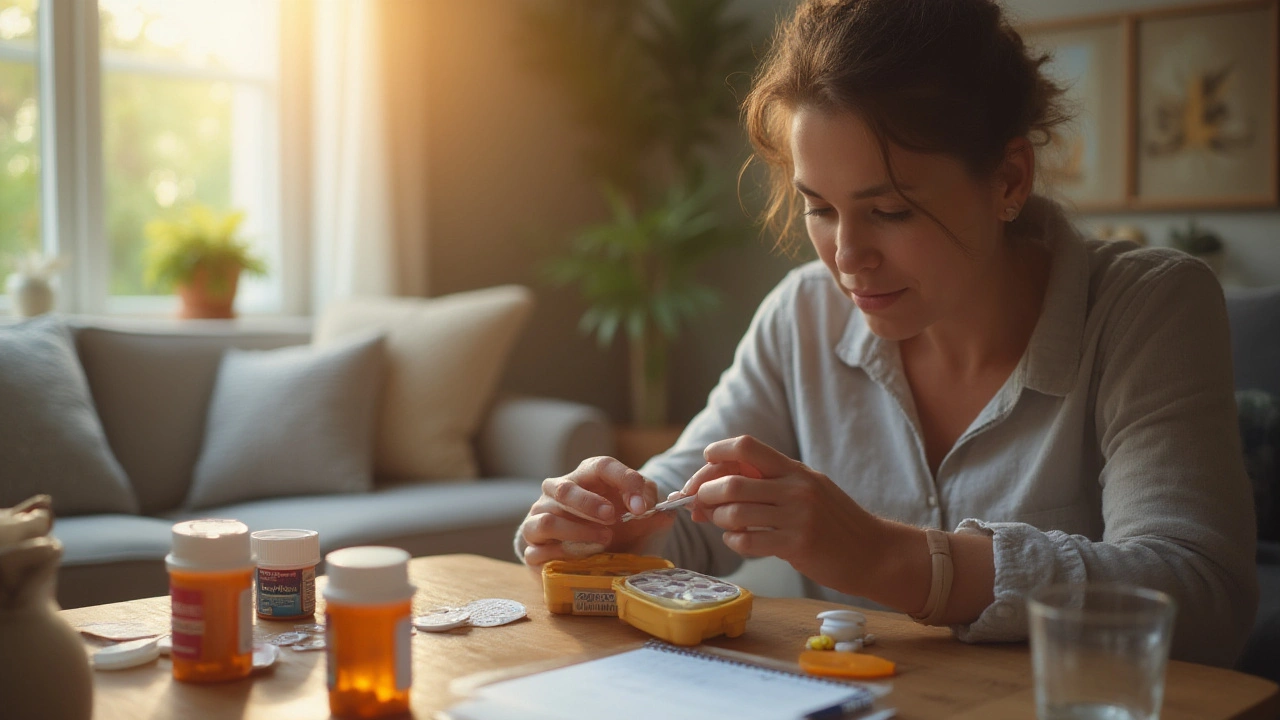Drug Interactions: Simple Guide to Stay Safe
Ever taken two medicines and wondered if they might be fighting each other? You’re not alone. Drug interactions happen when one drug changes the way another works. The result can be a weaker effect, a stronger effect, or unexpected side effects. Knowing the basics can keep you from nasty surprises.
Common Interaction Types
Interactions fall into three main buckets. First, pharmacokinetic interactions affect how your body absorbs, breaks down, or eliminates a drug. For example, a common over‑the‑counter pain reliever like ibuprofen can raise the level of certain blood pressure meds, because both compete for the same liver enzymes.
Second, pharmacodynamic interactions happen when two drugs act on the same body system. Mixing a sedative such as lorazepam with a sleep aid like diphenhydramine can make you excessively drowsy, increasing fall risk.
Third, food‑drug interactions influence drug action through what you eat. Grapefruit juice is a classic culprit; it can block enzymes that clear many cholesterol‑lowering pills, causing higher drug levels and possible toxicity.
While the list sounds scary, most interactions involve everyday drugs you already know. Our tag page pulls articles that explain each combo in plain language, from gabapentin with antacids to sotalol with certain antibiotics.
How to Manage and Prevent Interactions
Start with a clear medication list. Write down every prescription, over‑the‑counter product, supplement, and herb you take. Bring that list to every doctor’s appointment and anytime you fill a new prescription.
Ask your pharmacist to double‑check for interactions. They have tools that flag risky pairs instantly. If you’re buying medicines online, only use reputable UK pharmacies that require a prescription and run interaction checks.
Watch the timing. Some drugs need to be spaced out to avoid competition in the gut. For instance, taking iron supplements and thyroid medication together can shrink the absorption of both. A simple 2‑hour gap usually does the trick.
Keep an eye on side effects. New symptoms like unusual fatigue, rapid heartbeat, or unexpected bruising could signal an interaction. If anything feels off, contact your healthcare provider right away.
Finally, stay informed. Our “drug interactions” tag groups guides on popular combos, such as:
- Neurontin (gabapentin) with antacids – what to avoid and when to separate doses.
- Advair Diskus with certain antibiotics – why timing matters.
- Beta‑glucans with blood thinners – potential bleeding risk.
- Prednisolone with NSAIDs – how to reduce stomach irritation.
Each article breaks down the science into bite‑size facts and offers practical steps you can take today.
Bottom line: drug interactions are common, but they’re manageable. Keep a current med list, talk to your pharmacist, and read the simple guides on this tag page. By staying aware, you protect your health and get the most benefit from every medication you use.
How to Ask About Drug Interactions When Getting a New Prescription
- Natala Menezes
- |
- |
- 10
Learn how to ask the right questions about drug interactions when getting a new prescription to avoid dangerous side effects, ER visits, and medication errors. Know what to ask your doctor and pharmacist.
View moreMAOIs and OTC Cold Medicines: What You Must Know About Hypertensive Crisis and Serotonin Risks
- Natala Menezes
- |
- |
- 13
MAOIs can cause life-threatening hypertensive crisis or serotonin syndrome when mixed with common OTC cold medicines. Learn which ingredients to avoid, safe alternatives, and what to do if you accidentally take a dangerous combo.
View moreBisphosphonates and Calcium Supplements: How to Avoid Absorption Problems
- Natala Menezes
- |
- |
- 15
Bisphosphonates and calcium supplements can cancel each other out if taken together. Learn the exact timing rules to ensure your osteoporosis treatment works and how to avoid common mistakes that reduce effectiveness.
View moreLevetiracetam Interactions: Essential Things to Avoid for Safe Use
- Natala Menezes
- |
- |
- 5
Uncover the real-life do's and don'ts while taking levetiracetam. Learn what to avoid, how drug interactions affect you, and the tricks to maximize seizure control safely.
View more


